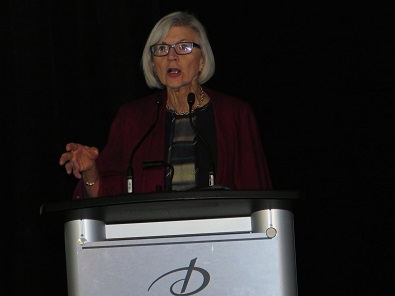Just before Canada’s Chief Justice took the podium for her speech at the “Aboriginal Peoples and Law: We Are All Here to Stay” conference, she honoured the head of the Truth and Reconciliation Commission.
Chief Justice , Beverley McLachlin presented Justice Murray Sinclair with a medal for his work with the TRC.
“I have a great deal of respect for the Chief Justice of Canada,” says Sinclair. “She has led the way in many respects to getting the courts of Canada to recognize the importance of reconciliation, so it was a very deep honour to receive it from her.”
After the ceremony, McLachlin spent the next half hour lecturing a ballroom full of judges, lawyers, justice workers, including Saskatchewan’s Justice Minister about the distrust Aboriginal people have for the justice system.
McLachlin says there are still plenty of barriers for aboriginal people. She said there is a sense the legal system is not there to protect what aboriginal people hold dear but rather to impose, a foreign, alien law upon them.
“It should hardly surprise us that the people who see the law as victimizing them and as discriminating against them might be slow to embrace it even when those practices are removed,” she says. “Reducing cultural barriers to access to justice for aboriginal people requires sensitivity and change on the part of lawyers, judges, court administrators. But the street is not one way. Aboriginal peoples must be involved too. ”
McLachlin says one of the things that will help remove the barriers is increasing the number of aboriginal lawyers and appointing more aboriginal judges in Canada.
Saskatchewan’s Justice Minister, Gordon Wyant, says the province would like to increase the number of aboriginal appointments to the bench.
“We want to make sure there is a further balance on the court in terms of first nations representation, you’ll agree the balance isn’t very good,” says Wyant.
“We need to encourage First Nations lawyers to apply, encourage First Nations lawyers to make sure they have the appropriate training to go through that process.”
